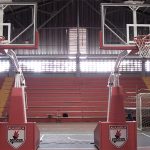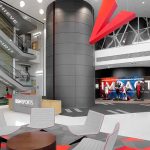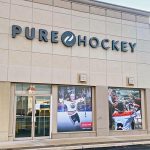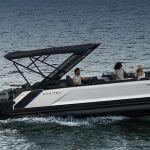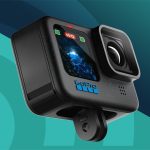Based on preliminary input from a number of executives reporting August retail comparable store sales results last week, the slumping housing market, higher fuel prices and an overall weaker economy wasnt the only reason for a disappointing back-to-school season.
It appears that some of the weakness in August may be self-inflicted as management from a number of department stores and teen retailers pointed to lower inventories as another reason for lower or flat sales. Back-to-school also continues to trend later into the fall and may still see some growth in September as kids get to school and assess trends.
Based on a preliminary tally of 36 retail-chain stores compiled by the International Council of Shopping Centers, comparable-store sales for the four-week fiscal month of August posted a gain of just 1.7% versus the year-ago period.
Based on a preliminary tally of 36 retail-chain stores compiled by the International Council of Shopping Centers, comparable-store sales for the four-week fiscal month of August posted a gain of just 1.7% versus the year-ago period.
The numbers were actually worse when excluding the Wal-Mart business, which posted comp store sales growth of 3.5% for the month. Excluding the WMT numbers, the market turned in a flat month, but grew 2.0% when excluding chain drug stores.
Still, ICSC reported that the change in total sales and total sales excluding WMT both posted their weakest sales pace since March 2008.
Sales arent getting much help from global warming either. Weather Trends International reported that the fiscal month of August was the coldest/wettest month since 2004, or the second coldest in 11 years and wettest in more than 16 years. WTI’s weather and retail sales research found that “Ideal weather in August is historically warm/dry weather to help with summer clearance sales and store traffic, but [this year it was] on the other end of the scale…with cold/wet conditions.”
Lower inventories also cut into clearance sales, but less reliance on those lower-margin sales may actually help boost margins for the third quarter.
Wholesale Clubs were the real winners for the month, with BJs Wholesale posting a 15.4% comp store gain, Costco growing 9.0% for the month and Sams Club showing a 7.5% comp sales improvement for August. Discounters were also up, but not nearly at the same level as the Club channel. Target actually posted a decline for the month.
Department Stores posted the largest comp sales decline for the month, with the group tallying a 5.8% decline for the period. Even the Luxury Store end of this channel was down, posting a 5.6% decline for the month.
Apparel Chain stores, which do not track the business at The Buckle, Zumiez and Pacific Sunwear, were down 4.9% for the month as a group. A&F and Chicos led the decliners, both down in double-digits. The Teen Store segment comped down 4.6% for August.
The Buckle, Inc. continued to show significant growth, reporting a 22.4% increase versus comps in the year-ago period. Net sales for the month increased 29.3% to $77.5 million from net sales of $59.9 million for the year ago period.
Zumiez Inc. reported net sales for the month increased 13.1% to $54.2 million as compared to $47.0 million for the same period of 2007, but comps slowed considerably. Comps for the action sports retailer increased 0.2% for the same period after increasing 17.4% last year. Positive comps from footwear, accessories, and boys apparel offset negative comps in junior apparel, mens apparel, and skate hard goods.
Pacific Sunwear of California, Inc. reported that sales were $163.1 million for the four-week fiscal August, a 4% decrease from the same period last year. Comps for PacSun decreased 6% for the same period. Geographically, comps were weakest in Florida, the Desert Southwest, California, and the Rocky Mountain/Great Plains region, while comps were the strongest in the Midwest and Texas, up mid and low-singles, respectively.
Apparel comps were up 9% and accounted for 83% of total comp sales. Juniors apparel comps were up low-20s against last year’s most difficult comparison of up mid-40s. Strength in Bullhead denim and tops were the primary drivers. Young men’s apparel comps were down low-single-digits. Strength in Bullhead denim was offset by weakness in short sets and swimwear. Accessory comps were down 20% and accounted for 14% of comp store sales. Footwear comps were down mid-70s, due to the planned exit of sneakers and fashion footwear that was announced in January and began in late April of this year. Footwear accounted for approximately 3% of comp-store sales.
Overall transactions were up mid-single-digits and the average sale per comp store was down low-double-digits.
According to retail point-of-sale data compiled by SportScanINFO, Sport Footwear sales were up in the mid to high-single-digits for the four-week retail fiscal month of August. Gains were strongest in the mall, where average selling prices were up more than $5 for the month versus the year-ago period, a clear indication that better goods and lower clearance are having an effect.
The sports retailer sector, which includes the full-line sporting goods, mall specialty, sport specialty and Internet channels, matched the overall growth number for the month, while the family retailer sector, which includes mid-tier department stores and family footwear retailers, outpaced the overall market for the month. Sales were down in the discount/mass channel.
Sport apparel was down in the high-single-digits for the month of August, with declines everywhere but the full-line department stores and Internet/catalog channels. Performance apparel sales were up in the low-single-digits for the month, with gains in the mall offsetting declines in the discount/mass channel.

